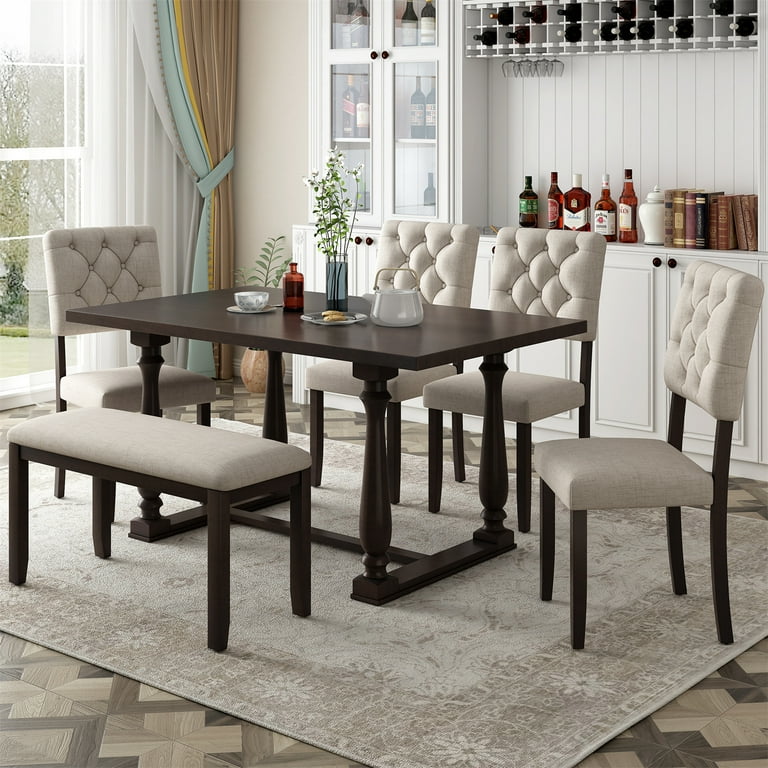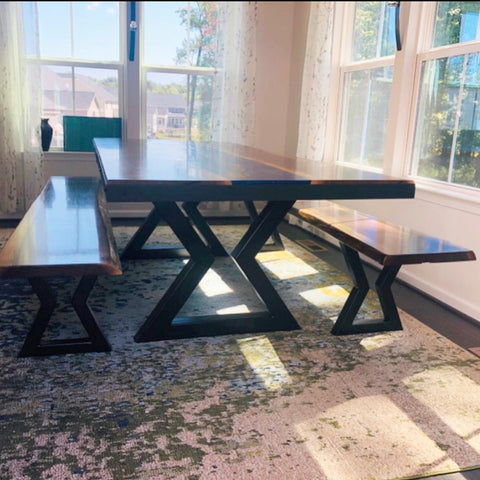Simple Steps to Replacing Old Dining Room Table Legs with New Ones
Simple Steps to Replacing Old Dining Room Table Legs with New Ones
Blog Article
From Traditional to Modern: Locate the Perfect Eating Room Table Legs for Your Design
The selection of dining-room table legs plays an essential role in defining the overall character of your room, connecting the space between traditional workmanship and modern-day appearances. While traditional designs such as cabriole and transformed legs evoke a sense of timeless class, modern styles like hairpin and geometric options provide an opportunity for striking aesthetic rate of interest. Assessing the ideal balance in between these designs calls for a nuanced understanding of your existing decoration and individual taste. As you consider these elements, the question stays: just how can you seamlessly incorporate these varied leg designs to produce a harmonious eating experience?
Recognizing Table Leg Styles
The selection of eating room table leg styles can considerably influence both the visual appeals and capability of the room. Each leg design contributes one-of-a-kind useful features and aesthetic components, catering to varied layout preferences and use requirements. Comprehending these designs is crucial for picking the ideal table that lines up with your overall interior decoration vision.
For instance, tapered legs offer a clean, timeless look that can improve a space's sophistication, while stand bases offer stability and take full advantage of legroom, making them suitable for smaller areas. Hairpin legs, a characteristic of mid-century contemporary design, present an industrial style, enabling an airy, open feel. Trestle legs evoke rustic charm, providing durable support and a sense of timelessness.
In addition, the option of products plays a substantial function. Wooden legs can bring heat and appearance, whereas steel choices typically communicate a streamlined, contemporary ambiance. Eventually, comprehending table leg styles is necessary for creating a natural dining area that shows personal design while making sure usefulness and convenience. By attentively considering these elements, you can improve both the functional and aesthetic appeal of your eating room.
Standard Table Leg Options
When selecting eating area table legs, typical alternatives usually personify classic elegance and craftsmanship. These styles reflect an abundant heritage and a commitment to top quality, making them suitable for those that appreciate classic visual appeals.
Among one of the most iconic traditional leg designs is the cabriole leg, defined by its elegant curved form. This style frequently includes attractive makings and is most generally located in Queen Anne and Chippendale furnishings. An additional prominent choice is the turned leg, which boasts a series of smooth, rounded forms that give a classic look while maintaining security.
Moreover, the straight leg, while easy, provides a basic and durable structure that can blend flawlessly with a selection of tabletop styles. For those drawn to ornate describing, claw-and-ball feet legs evoke a feeling of splendour and can offer as a stunning centerpiece in any eating space.
Finally, pedestal bases, although not purely legs, offer an alternative conventional option that enables adequate legroom and can be perfectly sculpted. Each of these conventional leg styles adds to the total setting of a dining-room, weding function with aesthetic charm.

Modern Table Leg Styles
Modern table leg designs provide a diverse series of designs that emphasize clean lines and cutting-edge materials. These layouts commonly prioritize functionality while working as striking prime focus within a dining space. Minimalist appearances are prevalent, with legs crafted from materials such as metal, glass, and engineered wood, which add to a modern and airy feel.
One preferred layout is the barrette leg, characterized by its slim, conical structure that provides security without frustrating the tabletop (dining room table legs). This style is usually found in mid-century contemporary furniture and can easily match various table forms. Another pattern is using geometric forms, where legs may take on angular or asymmetrical forms, including aesthetic interest and a touch of creativity

Blending Styles for Distinct Areas
Frequently, home owners look for to develop distinct dining spaces that show their personal design by mixing numerous style aspects. This approach enables the incorporation of diverse visual appeals, resulting in an unified yet unique environment. For example, combining a rustic wooden table with streamlined, contemporary steel legs can develop an attractive contrast that boosts visit their website the space's overall charm.
In addition, incorporating vintage table legs with contemporary table tops can stimulate a feeling of background while maintaining a modern-day perceptiveness. Such combinations not only display specific taste but additionally urge imagination, permitting homeowners to curate an area that feels both personal and welcoming.
Color plays an important function in this blending procedure; selecting table legs that complement or comparison with the existing color pattern can enhance visual passion. Whitewashed legs can soften the daring of a dark table surface area, creating a well balanced aesthetic.
Tips for Picking the Right Legs
Choosing the right table legs is essential for achieving both functionality and aesthetic allure in your dining area. Begin by thinking about the overall design of your area. Typical setups take advantage of legs that include intricate carvings additional reading or transformed layouts, while modern areas may require streamlined, minimalist designs.
Next, examine the elevation and security of the legs. dining room table legs. Conventional eating tables vary between 28 to 30 inches in elevation, so guarantee the legs match this measurement for comfort. Furthermore, robust materials, such as hardwood or metal, can improve stability and durability
Review the leg form also-- choices consist of straight, tapered, or stand layouts. Straight legs supply a timeless look, while tapered legs can include a touch of sophistication. Pedestal bases supply adequate legroom and are optimal for smaller rooms.
Conclusion
In summary, choosing the suitable dining-room table legs needs careful factor to consider of both modern-day and traditional styles. Standard options such as cabriole and transformed legs provide ageless beauty, while contemporary styles like hairpin and geometric shapes provide a modern touch. By integrating leg style, elevation, and material with the total décor, a natural and inviting atmosphere can be attained. Inevitably, the chosen table legs should show the wanted aesthetic, improving the eating experience within the area.
The selection of eating room table leg styles can significantly influence both the aesthetics and capability of the area. Ultimately, recognizing table leg styles is crucial for creating a natural eating area that visit the site mirrors personal design while making certain usefulness and comfort.One of the most legendary typical leg designs is the cabriole leg, defined by its elegant bent form. Straight legs use a timeless look, while conical legs can add a touch of elegance.In summary, selecting the ideal dining space table legs calls for cautious factor to consider of both modern-day and standard designs.
Report this page